DJI
DJI Mavic 2 Pro: a very convincing evolution
Aprox. 1579€ - see price -
See specificationsSince the release of its Mavic Pro in 2016, DJI has taken center stage with its drones that are both compact, intelligent and capable of producing good image quality. The Chinese intends to keep its crown with an even more advanced Mavic 2 Pro.
Positive points
Good image quality.
Many useful and well thought out flight modes.
Obstacle detection on all sides.
Easy and safe flight / Stability.
Excellent build quality.
Still compact, although a bit larger than the Mavic Pro.
Good autonomy.
Bad points
Rechargeable batteries only via the proprietary charger.
Fairly high introductory price.
Camera with 1 "sensor of 20 Mpx or optical zoom with small sensor, you have to choose (Mavic 2 Pro or Mavic 2 Zoom).
Problems with updates via the smartphone detected by several users, including us.
Android application still not translated into French!
Our review
Presentation
Unlike the Mavic Pro, the Mavic 2 is available in two versions: a "Pro", tested here, this time with a 1 "sensor camera, but also a" Zoom ", which is distinguished by an optical zoom (2x) which the other Mavics lack, apart from this difference in camera, the Mavics 2 are technically identical, to within 2 grams.
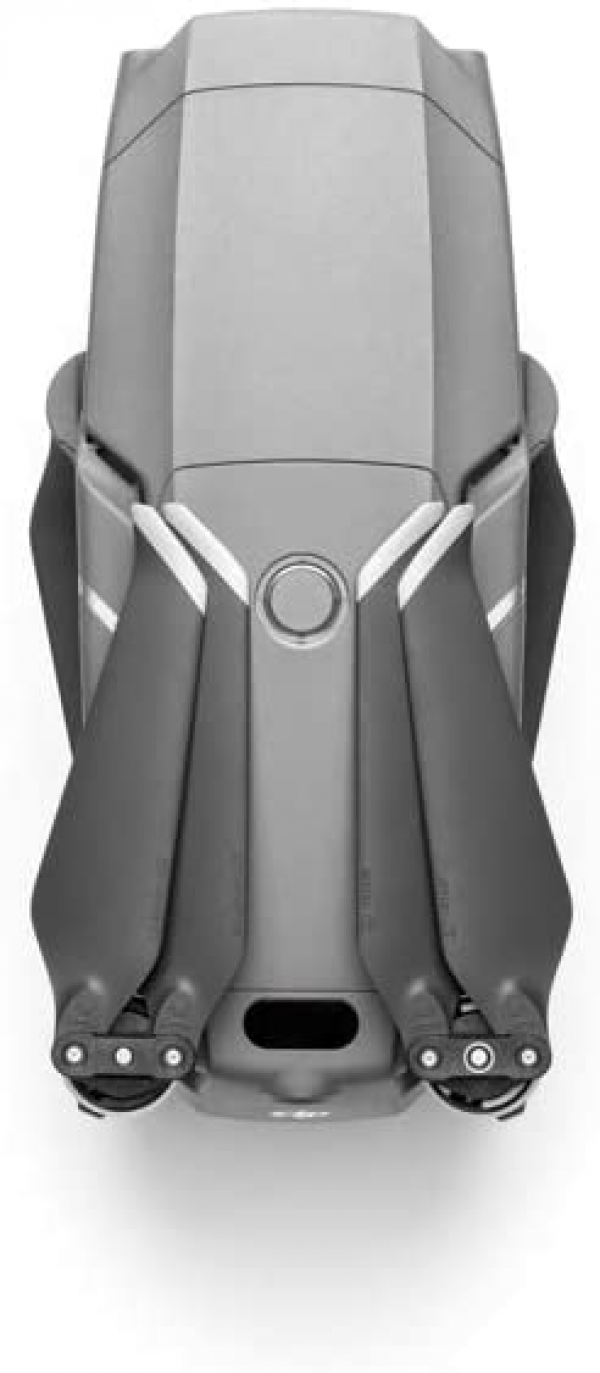
Getting started
DJI has managed to get everyone to agree with the foldable design of its Mavic Pro: well thought out, it allows you to take your drone with you everywhere and deploy it in just a few seconds. It is therefore quite logical that the Mavic 2 adopts the same principle of foldable arms. The general design evolves, however, the Mavic 2 Pro sporting a more worked shape and a little less angular than its predecessor. The manufacturing quality is impeccable and the plastics seem solid. The name "Pro" does not seem usurped, the device inspires confidence and seems even better built than the previous one. Despite its foldable side, there is no excessive play and the rigidity is there. Only the flexible covers protecting the different ports seem a bit fragile.
Once in hand, we note, however, that the Chinese quadrotor has become overweight. It is indeed larger than the first Mavic Pro. From 198 x 83 x 83 mm, it thus passes to 214 x 91 x 84 mm folded; once unfolded, it occupies a volume of 322 x 242 x 84 mm and is therefore approximately 8 cm longer. Above all, it is also heavier, going from 734 g to 907 g. A difference which is not trivial, since it thus crosses the 800 g mark and changes the legislative framework (see box). If we add the remote control (317 g) and a smartphone of average mass (180 g), we reach about 1.4 kg, which is quite light in absolute terms, but already less if we want to transport it in a bag all day. When roaming, we may prefer the lightness of the Mavic Air, for example, although its range of use is significantly lower.
This weighting is however justified by the addition of several sensors and the use of a 4S battery, more powerful, but heavier (297 g, 57 g more than that of the Mavic Pro).
On the side of the radio control, no upheaval, the changes are minor, but still welcome. First of all, we especially appreciate the possibility of unscrewing the sticks for transport. These are stored in the small notches which can also be used to hold the smartphone during use. DJI has thought of providing a second pair to replace them in the event of loss.
If it is possible to fly the Mavic 2 Pro without a smartphone, it is however hardly practical since the screen of the radio control only serves to display information on the flight and the status of the drone. To see what the drone is filming, the best solution therefore remains to go through the DJI Go 4 application, compatible with most Android and iOS smartphones. However, we have suffered some mishaps (updates impossible via the smartphone, loss of connection ...), in particular with Huawei smartphones (P8 and P9) and we can only advise you too much to check that your smartphone is listed well in the list of compatible models. Fortunately, no problem to report with our Galaxy S6 and Honor Play used for the tests, except for some subtleties of positioning in the remote control. The USB cable connection system, in particular, is not very practical for the installation of certain smartphones, the connector tending to move a little and asking to be pushed in well.
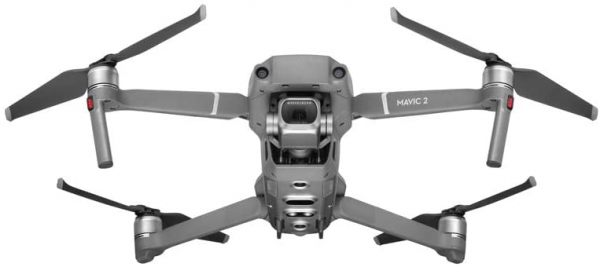
Flight
The Mavic 2 Pro is ready to fly just as fast as its predecessors. Just remove the protective screen from its camera, unfold its four arms and turn it on. We then turn on the radio control and connect the smartphone which can automatically launch the DJI Go 4 application if authorized. After checking the firmware if the smartphone is connected to a network and after acquiring GPS signals (usually only a few seconds), we access the flight interface displaying the image captured by the camera and a whole bunch information on the screen. These are useful, but rather invasive and sometimes redundant to those displayed on the screen of the radio control. Fortunately, we can make them disappear with a simple swipe of the finger on the screen, in order to better see what the camera captures.
The engines are started by positioning the two sticks in the lower bottom corner, towards the inside. Then just push the left stick to take off. A button on the interface allows you to take off automatically, the Mavic 2 Pro then positioning itself in hovering flight about 1.2 m above its takeoff point. The radio control is set to mode 2 by default (gas and yaw to the left, pitch and roll to the right), but another setting can be chosen if necessary. Note however that the left stick does not really control the gases, but the height of the quadrotor, since it automatically returns to the center. The Mavic 2 is indeed completely stabilized and stays perfectly in place when you no longer touch the controls. A very reassuring behavior and obviously well suited to taking pictures, reason for this camera.
The controls are in any case fairly reactive. Not as much as with an analog radio link in 2.4 GHz, of course, but enough to drive safely and control its framing. The OcuSync 2.0 digital link developed by DJI also offers remarkable transmission quality, with a 1080p video signal that can be sent over several kilometers. The interference depends of course on the obstacles and the difference in level between the drone and the radio control, but during our tests on flat ground, we were able to go up to 2 km without display problem. Beware, however, of respecting French law which requires keeping the device in direct view, which necessarily limits usage a little.
No need to worry, however, in the event of a loss of signal, the Mavic 2 incorporates a GPS + Glonass chip allowing it to automatically return to its take-off point or to the place where its pilot is. It also has a myriad of sensors allowing it to avoid obstacles, which can avoid many accidents and is above all very reassuring. The Mavic 2 Pro doubles, so to speak, the number of its collision sensors compared to the Mavic Pro: there are always two cameras on the front and two cameras as well as an infrared sensor on the bottom, but also now two side cameras and two at the back, as well as an infrared sensor on the top. Enough to offer the drone a 360 ° view to detect obstacles in all directions. And it is clear that it works wonderfully. The APAS function even allows the drone to avoid obstacles automatically, which allows you to focus on the framing. However, it is better not to lose your vigilance, the system not being infallible, especially if you gain a little speed. The finest obstacles, such as leafless branches or power lines, can for example pass between the cracks, including with the Tripod mode in which all the sensors are activated and the speed reduced. Normal mode, for its part, does not use the side sensors, while Sport mode completely deactivates obstacle detection, leaving more control to the pilot and increasing the speed of the drone (up to 72 km / h; upper corner socket).
The collision avoidance system also works wonders when it comes to using ActiveTrack 2.0. The Mavic 2 is then able to follow a subject automatically and makes sure to frame and fly while keeping it in the center of the image. Already impressive on the Mavic Pro, it is even more so on this second version. It can thus ensure follow-up despite a visual loss of the subject for a short time, and manages to make the drone evolve between the trees without transforming it into a chainsaw in spite of itself.
More generally, automated flight modes are once again in the spotlight and there are thus multiple creative options for making plans that are usually quite technical to carry out for a pilot or even a cameraman - the difficulty being mainly to manage both the flight and the framing while keeping a good fluidity. A kinematic mode is nevertheless proposed to help us in this task, by smoothing the commands. We also note the introduction of an automatic timelapse mode, devilishly effective.
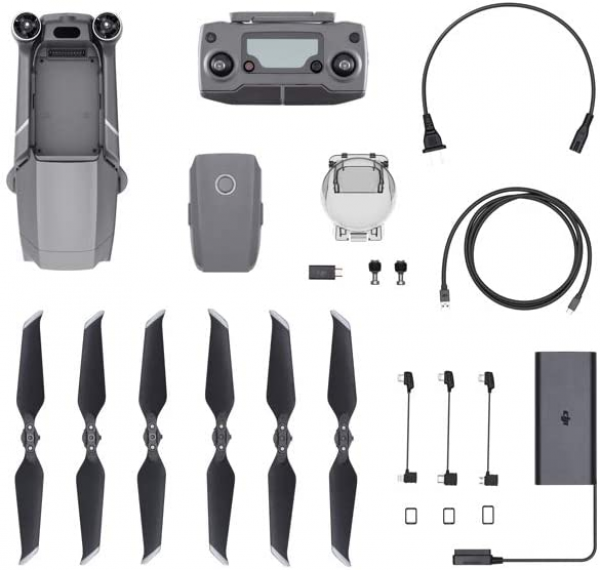
Image quality
It is truly on image quality that the Mavic 2 Pro differs from its predecessor and the Zoom version. He is in fact carrying a camera developed in collaboration with Hasselblad, a renowned Swedish manufacturer of medium format cameras. This has a 28 mm equivalent fixed focal length lens with variable aperture from f / 2.8 to f / 11. Behind officiates a Cmos sensor from 1 "to 20 Mpx. In comparison, the Mavic Pro and Mavic 2 Zoom are satisfied with a Cmos sensor from 1 / 2.3 "to 12 Mpx.
In addition to better image definition, this sensor gives the Mavic 2 Pro better dynamics and greater sensitivity. This is not trivial, especially for a drone which often has to undergo significant differences in brightness. This new Mavic thus joins the Phantom 4 Pro, equipped with a similar sensor.
This change of camera is accompanied by more settings in the application. We can thus mount up to ISO 12,800 in photos, ISO 6,400 in videos, adjust the exposure time and play on the aperture. We also benefit from a white balance adjustment and image profiles. Photos can be saved in Jpeg and Raw, while videos are encoded in H264 or H265. The latter offers the advantage of better compression and thus saves space on the memory card. This format also allows you to take advantage of all the refinements of the sensor and in particular the recording on 10 bits (Dlog-M) and in HDR. On the flip side, you need a computer powerful enough to decode it.
The quality of the optics is satisfactory, with a good sharpness in the center and a reasonable loss at the periphery of the image, as shown by the photos of our test scene taken in the laboratory. A result that we find in flight, even if we note a small drop in dive due to stabilization.
We were finally able to test the latest DJI drone, the Mavic 2 Pro. And to better analyze the contribution of its larger and defined sensor (Cmos ...
In automatic video mode, in delicate light conditions, the camera goes up to ISO and this generates a little noise, but the image remains largely usable and most of the time well exposed. If necessary, you can always switch to manual mode to adjust the different shooting parameters yourself.
The Mavic 2 Pro is capable of filming up to Ultra HD at 30 fps. We regret that it does not offer 60 fps at this definition, or even a recording in 4K Cine (4096 x 2160 px). Features still reserved for the Phantom 4 Pro. The 60 fps are accessible only in 2.7K and in Full HD.
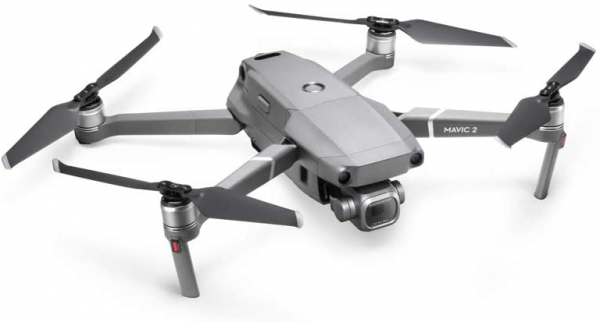
Autonomy
The Mavic 2 Pro LiPo battery changes to 4S format. If its capacity increases little compared to the 3S of the Mavic Pro (3,850 mAh against 3,830 mAh), its 4 cells deliver a higher voltage (15.4 V against 11.4 V), able to power motors faster.
Despite this, the autonomy of the Mavic 2 Pro is up compared to that of the Mavic Pro. DJI announces 4 more minutes in flight, up to 31 minutes without wind with a speed of 25 km / h and 25 minutes in "normal flight" (up to 15% of battery). In practice, the default settings trigger an alarm from 25% of remaining battery, after an effective flight time of around twenty minutes. By keeping manual control, you can extend the flight by a few minutes, but rarely beyond 25 minutes. The 31 minutes announced correspond to a complete discharge of the battery, by cutting all the alerts to keep the drone in the air, which is neither realistic nor recommendable for the life of the battery. However, there is time to take good shots with the default settings.
The purchase of at least one additional battery is still recommended, although the recharge is not too long (1h30). Indeed, it is not possible to recharge from a simple large capacity external battery, contrary to what the Parrot Anafi offers.
Good point on the other hand, the Mavic 2 Pro uses a so-called "intelligent" battery, in that it integrates a charge manager and various systems aimed at preserving it. Convenient so you don't have to worry about its charging time or storage load, for example.
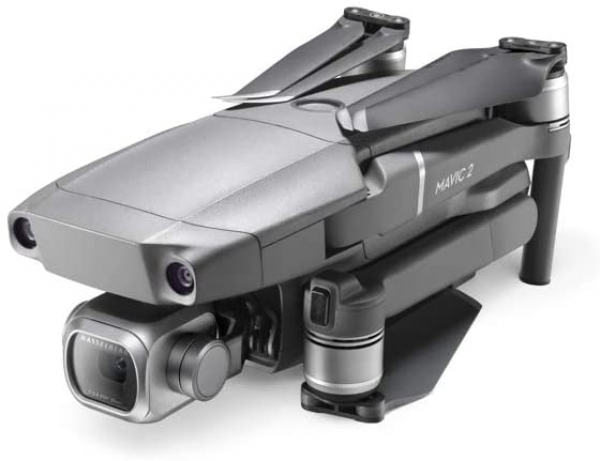
Conclusion
The Mavic 2 Pro improves all points of the Mavic Pro, our favorite flying camera of 2016. In addition to better image quality, it offers an even safer flight thanks to its numerous optical sensors and its automations which allow focus on framing without worrying about driving . Despite a slightly larger size, it is easy to transport and it is a pleasure to be able to count on such a device in a large number of situations. The Mavic 2 Pro therefore easily takes the crown of the best consumer drone of 2018 and should even keep it for some time.
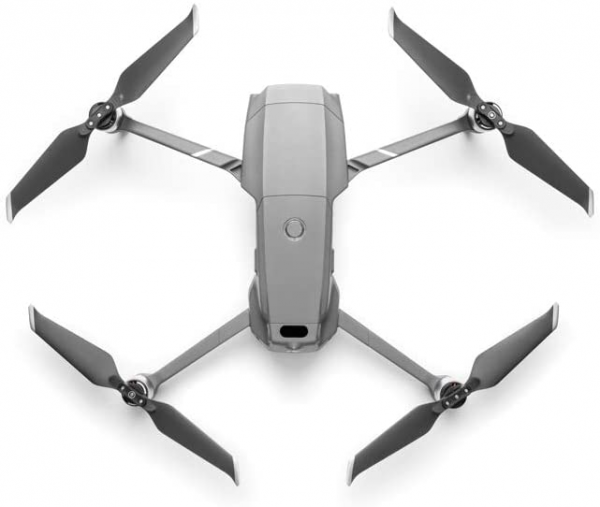
Specifications
Reviews

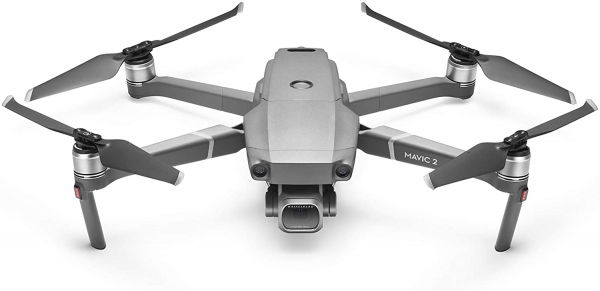
My best drone so far
That's my third drone and the best one so far! Amazing video and photo quality even during low light video shooting (evening and night time), great new following mode with obstacle obstruction. I was flying for about 20 min and the battery was still ok to fly more for about 5-7 min (it was a little bit windy). Amazing product from DJI - worth every dollar spent !!!
Very easy to control even for a beginner
This is only a review of how easy this drone is to fly even for a total beginner. I did however prepare myself prior to opening up the box by watching videos / tutorials of what 1st timers should do prior to flight and they helped immensely. The different flight modes, such as beginner, will allow you to familiarize yourself with the controls until you get more comfortable. Things such as auto takeoff, landing, return to home and all the obstacle avoidance sensors greatly help until you get more flight time. There is also a pause button that once pressed acts as "emergency braking" and will stop the unit, even out of some automated flight modes, and just hover.
It's up to the individual whether to spend $ 1,500.00 for your 1st drone but if you do this unit certainly has lots of precaution settings to help you along.
The best drone I ever owned
I have owned the Phantom 2, Phantom 3, Phantom 4 Pro, Mavic 1 Pro. Now I own the Mavic 2 Pro. It beats them all. Best Quality for photos I have ever seen. I do more photography then video and this drone does it best. This is my 2nd DJI Mavic 2 Pro. You wont be disappointed with this drone's video and photo quality.
Best Birthday Gift ever
My husband loves his drone !! He does wish the battery life lasted longer (but I just purchased another battery for Christmas, hoping that helps remedy the situation!). He would also like to zoom in a little more, but other than that loves it so much! We use it for our real estate business and for taking overhead shots of our land.
A great drone
Amazing drone! This is a feature rich piece of equipment. The camera is amazing. The controls are well laid out and responsive. I am very pleased with the magic pro 2.
Absolutely amazing.
Absolutely amazing piece of tech. I want to marry this thing. I love it. amazing photo quality. Great build. Great range. Just stunning.
THIS is the drone you've been waiting for!
If you're interested in lower light images like sunset or sunrise, you'll want to know that the sensor on this camera can handle it well. The MavicPro and the Mavic Zoom cameras have smaller sensors and are TERRIBLE in low light. This drone rocks! By the way, that is my ONLY criticism of those 2 drones, other than the sensor not being what I want, they are also incredible flying cameras.